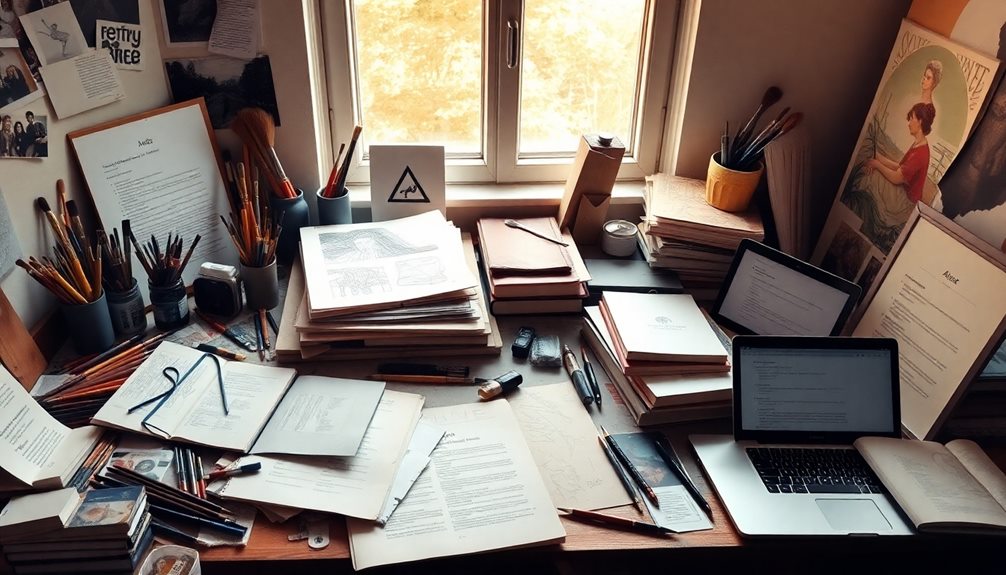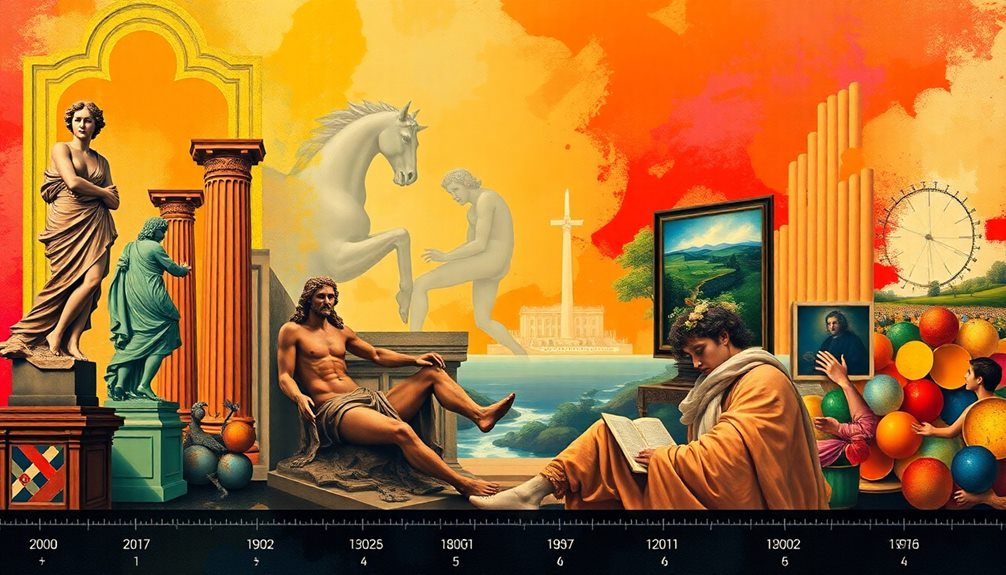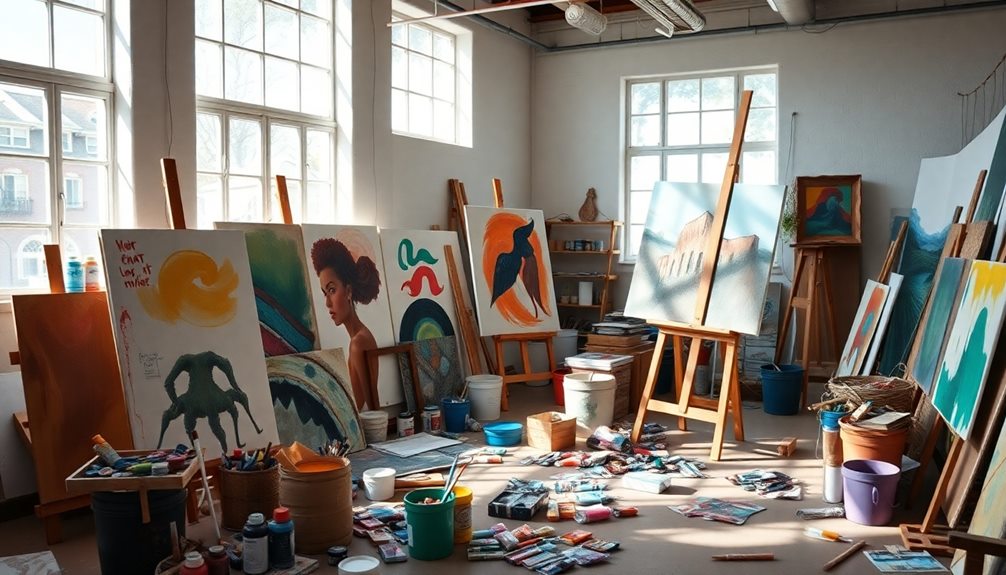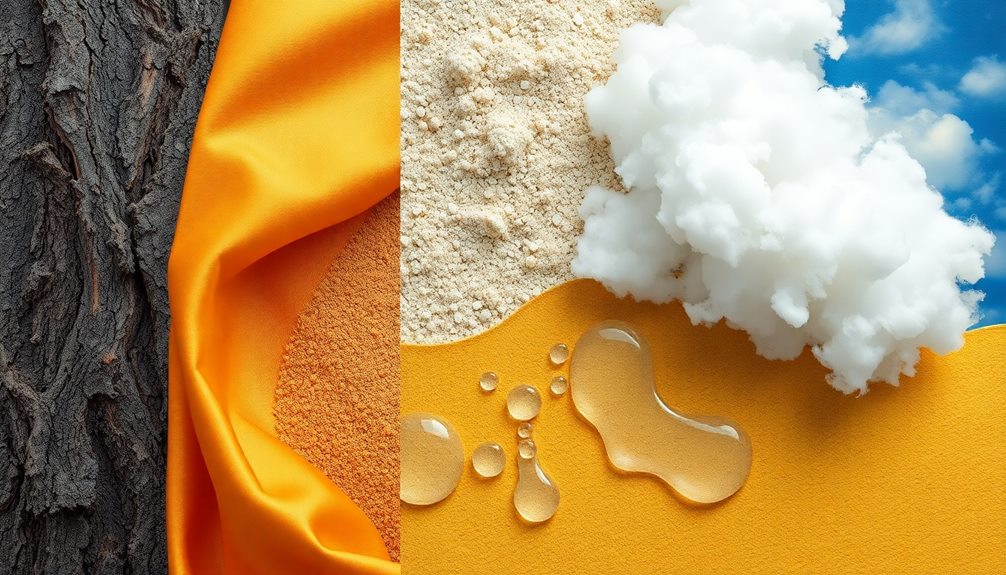Citations are essential in art writing, as they enhance your credibility and respect the intellectual property of others. By properly acknowledging sources, you support your arguments and embody academic integrity. Depending on your discipline, you can choose citation styles like MLA, Chicago, or APA. Each style has specific rules, so be sure to include key details like the artist's name, title, date, and medium. Using citation management tools can streamline this process. Understanding the nuances of effective citations will not only improve your work but also foster scholarly communication in the art community. There's more to explore on this topic!
Key Takeaways
- Citations enhance research credibility and reflect academic integrity by acknowledging sources used in art writing.
- Common citation styles in art writing include MLA, Chicago, APA, and Harvard, each with specific formatting rules.
- Effective citation techniques involve including essential information like artist's name, title, date, medium, and institution for artworks.
- Clear and consistent citations facilitate further research and maintain professionalism in academic discourse within the art community.
- Resources such as citation management tools and university writing centers can provide guidance on mastering citation practices in art writing.
Introduction
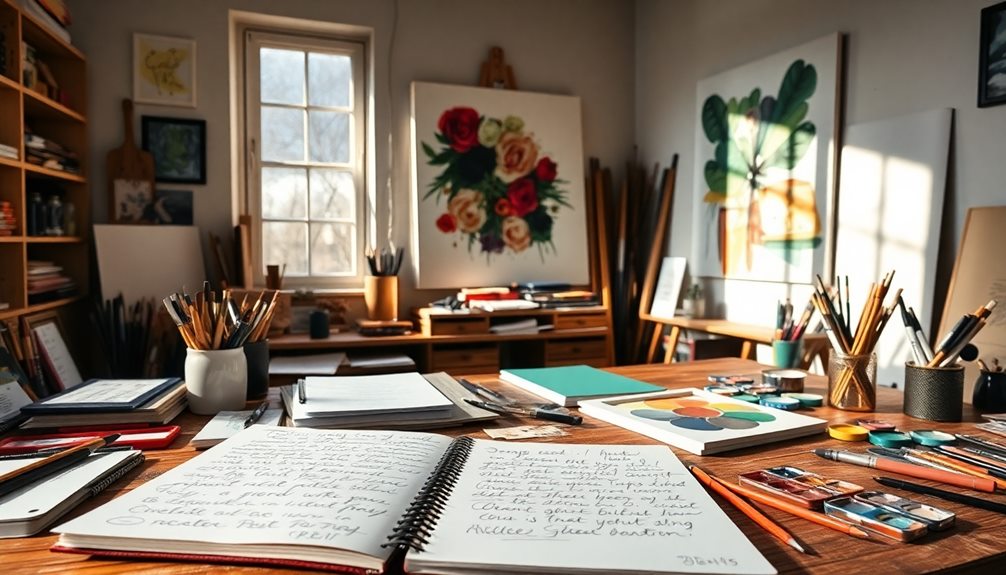
Citations play a crucial role in art writing, as they not only acknowledge the sources you draw from but also enhance the credibility of your research. When you write about art history, it's important to give credit where it's due.
Using proper citation practices reflects your academic integrity and invites readers to engage with your sources, fostering a scholarly conversation in the field.
In art writing, two common citation styles are Chicago and MLA. Chicago style often employs footnotes for citations, allowing you to provide additional commentary without disrupting your text's flow.
On the other hand, MLA format typically requires in-text citations followed by a Works Cited page. This ensures that every material you reference is accounted for, making it easy for your audience to follow your research.
Key Concepts and Definitions
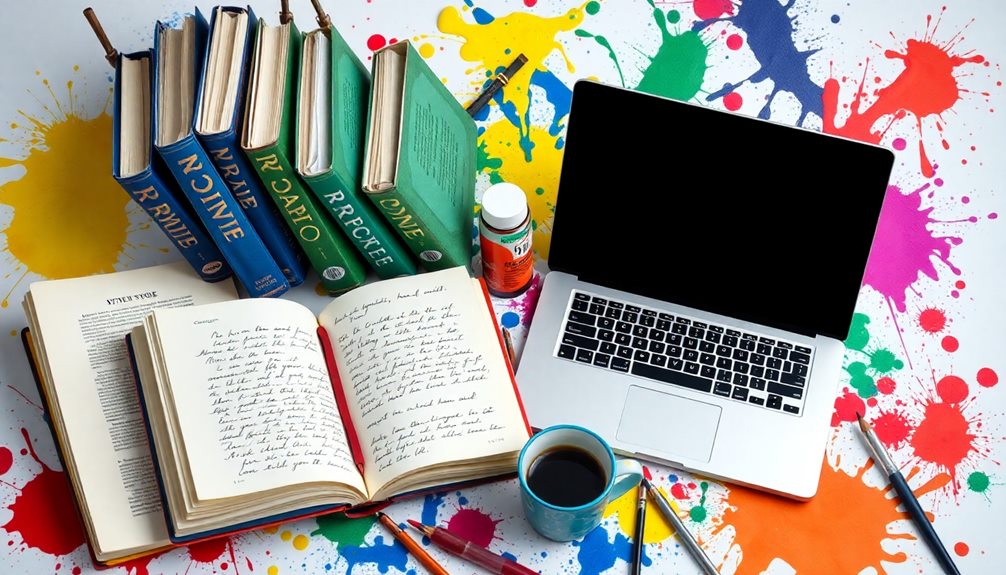
Understanding key concepts and definitions in citation practices is vital for effective art writing. Citations serve to credit creators and enhance the credibility of your academic arguments, blending originality with humility.
In art writing, two citation styles are commonly used: the Chicago Manual of Style and MLA style.
The Chicago Manual of Style is often favored in art history, as it allows for footnotes rather than in-text citations, which can provide more context for your references. When citing images, key components include the creator's name, the title of the work (italicized), the date of creation, the medium, and the institution where the work is held.
On the other hand, MLA style requires you to use parenthetical citations within the text, alongside a corresponding Works Cited page that lists all referenced sources in alphabetical order.
Proper citation practices not only adhere to disciplinary norms but also reflect academic integrity and respect for intellectual property. By understanding these key concepts, you'll be better equipped to navigate the complexities of citations in your art writing.
Citation Techniques Overview
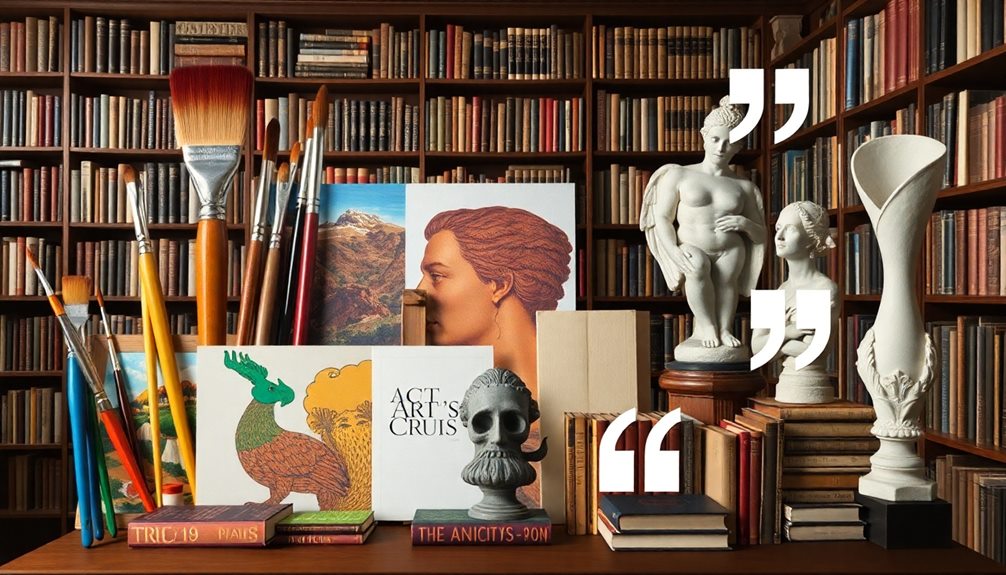
Effective citation techniques are crucial for anyone engaged in art writing, as they not only acknowledge sources but also strengthen the overall argument. In this field, citation styles are commonly used, with MLA style and Chicago Manual of Style being two of the most prevalent.
When using MLA style, you'll focus on in-text citations along with a Works Cited section, which should be organized alphabetically for easy reference. This approach is particularly helpful when dealing with visual materials.
On the other hand, Chicago style often employs footnotes for citations, requiring you to include detailed information about the artwork upon first mention—this includes the artist's name, title, date, and medium.
To streamline your citation process, consider utilizing citation management tools like Zotero or Mendeley. These tools help you maintain organized records and ensure you adhere to specific formatting guidelines based on the chosen citation style.
Real-World Citation Scenarios
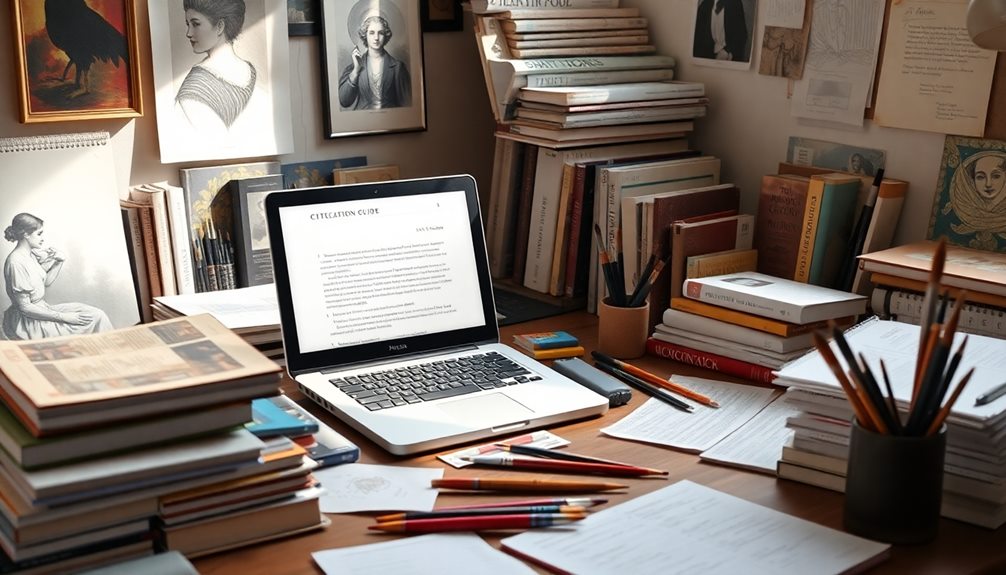
In the realm of art writing, applying citation techniques accurately can make a significant difference in your work's credibility. When you reference an artwork, start with the artist's name, followed by the title of the work, date of creation, and medium. If the piece is housed in a museum, you'll also need to include the institution's name.
Depending on the citation style you choose—be it MLA or Chicago—details will vary. For instance, citation styles are commonly used to ensure uniformity across your references.
When citing images from a museum's website, don't forget to add the URL and the date you accessed it. This not only helps your readers find the source but also enhances the reliability of your research.
If you're discussing temporary exhibitions, remember to include the exhibition title and dates. In Chicago style, consider using footnotes for more detailed citations; this allows you to elaborate without interrupting your narrative flow.
Tips and Best Practices

Citing artworks accurately is crucial for maintaining credibility in your art writing. Always include essential information in citations, such as the artist's name, title of the work (italicized), date created, medium, and institution. This clarity ensures your readers can locate the referenced pieces with ease.
Familiarize yourself with the citation styles commonly used in art writing, like MLA or Chicago, since each has specific formatting rules. When citing images, don't forget to provide URLs for online sources and access dates, especially for digital materials.
To streamline the citation process, utilize citation management tools like Zotero or Mendeley. These tools can help you organize your sources efficiently, making it easier to maintain accurate records.
Regularly consult citation style guides, such as the MLA Handbook or the Chicago Manual of Style, to stay updated on best practices and any changes in citation standards.
Audience Feedback on Citations
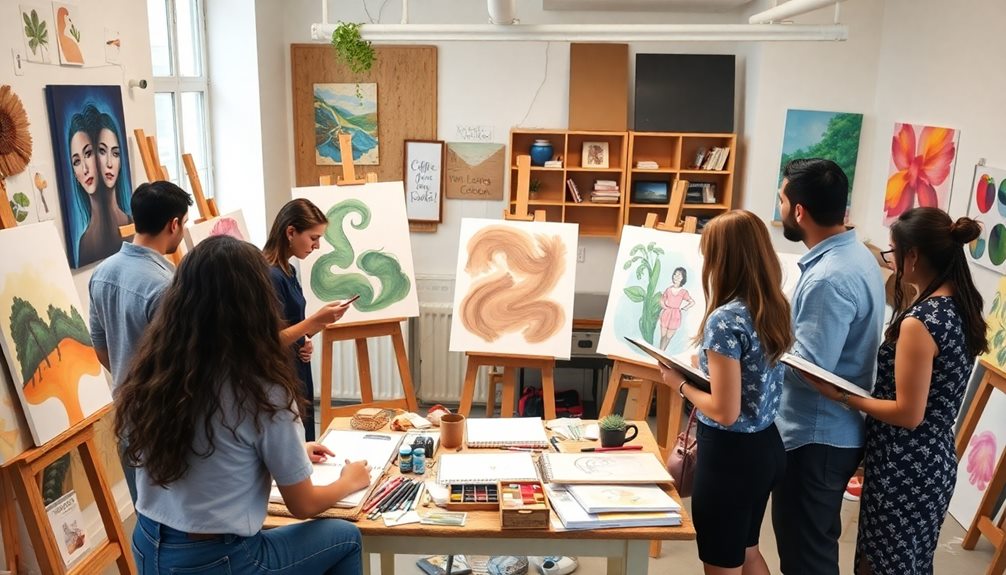
Recognizing the importance of clear citations in art writing, audience feedback consistently highlights how proper attribution enhances credibility and supports arguments. Many readers appreciate when you use common citation styles, such as MLA or Chicago, as consistency is crucial in art historical writing. This approach not only maintains professionalism but also aids in the clarity of your work. Additionally, avoiding common art writing mistakes, such as improper attribution or inconsistent citation formats, helps in fostering trust and authority in your analysis. Readers can easily lose confidence in your scholarship if sources are poorly credited or cited irregularly, making clarity and accuracy non-negotiable. By adhering to established citation standards, you ensure that your work is both accessible and respected within the academic and artistic communities.
Feedback often emphasizes that thorough citations reflect your engagement with sources and elevate the overall quality of academic discourse. Audiences value citations that provide additional information, such as the medium and location of artworks, which deepens their understanding. They want to see a connection between your arguments and the sources you reference.
Constructive feedback also points out the necessity of complete citations for images, including direct URLs for online sources. This practice facilitates further research, allowing your audience to explore the context behind your arguments.
Ethical Considerations in Citation

Ethical citation practices are crucial for ensuring that creators receive the credit they deserve, which fosters respect and integrity in academic discourse. When you fail to cite sources, you risk committing plagiarism—a serious offense that can lead to disciplinary action.
By acknowledging the contributions of other scholars, you not only support your arguments but also demonstrate humility and genuine engagement with the broader academic community.
Different citation styles are commonly used in art writing, including MLA style, which provides specific guidelines for maintaining consistency and clarity.
Adhering to these guidelines is essential for ethical writing, as it reflects a commitment to academic integrity and honesty. Proper citation shows that you value original research and scholarship, reinforcing the overall quality of your work.
Additional Resources

Accessing reliable resources is essential for mastering citation practices in art writing. Various institutions offer online resources for citation styles, such as the Purdue OWL and the MLA Style Center. These sites provide comprehensive guidelines for citation styles that are commonly used, including MLA and Chicago formats.
If you're looking to streamline your citation process, consider using citation management tools like Zotero or Mendeley. These tools can help you organize and format your citations efficiently, and you can find comparison charts online to help you choose the best one for your needs.
Don't forget about your library! Libraries often house copies of essential citation manuals, including the MLA Handbook and the Chicago Manual of Style, giving you easy access to up-to-date guidelines.
If you have specific questions, the Assistant Art Librarian at Firestone Library is available to assist you with resources tailored to art and archaeology disciplines.
Frequently Asked Questions
How Do You Cite a Guide?
To cite a guide, you'll need the author's name, title (italicized), publisher, year, and medium. If it's online, include the URL and access date. Always double-check any specific guidelines your institution provides.
How Do You Cite Sources in Art?
To cite sources in art, you'll include the artist's name, artwork title, date, medium, and institution. Depending on your style, you'll use footnotes or in-text citations, ensuring accuracy and clarity in your writing.
What Citation Format Do Art Historians Use?
Art historians primarily use the Chicago Manual of Style, specifically the Notes/Bibliography format. It emphasizes footnotes for detailed citations of artworks, ensuring you provide comprehensive details like artist names, titles, and institutions.
What Is Citation Style Guide?
A citation style guide's a tool that helps you format references correctly in your writing. It ensures clarity and consistency, so you can give proper credit to sources and maintain academic integrity in your work.
Conclusion
In conclusion, mastering citations in art writing is essential for establishing credibility and engaging your audience. By understanding key concepts, employing effective techniques, and considering ethical implications, you can enhance the quality of your work. Remember to seek feedback and continuously refine your approach. With these tools at your disposal, you'll not only elevate your writing but also contribute to the broader art community. So go ahead, embrace the power of citations and let your voice shine!
